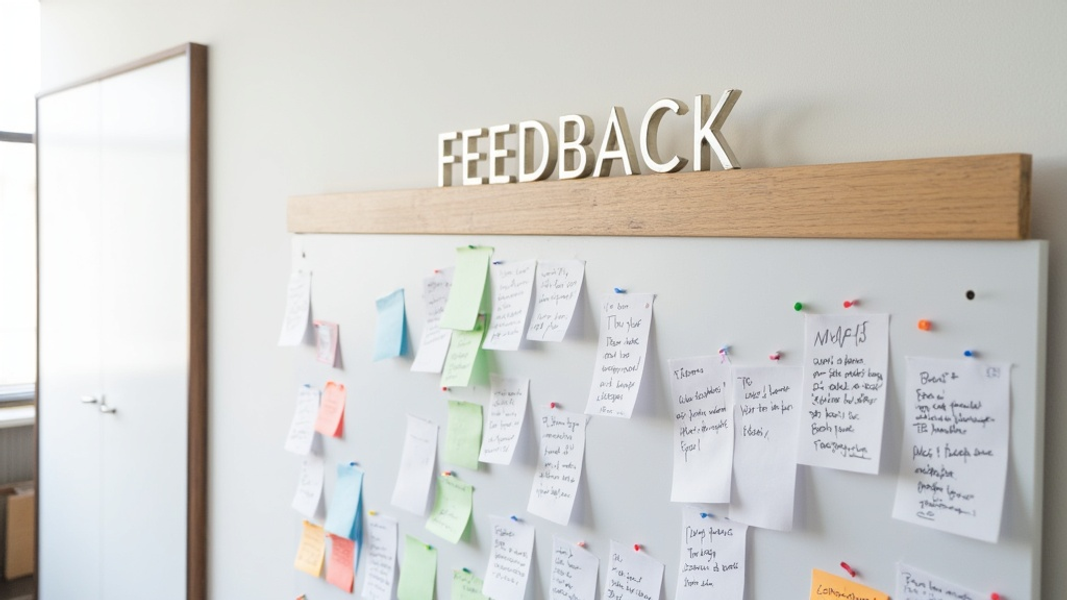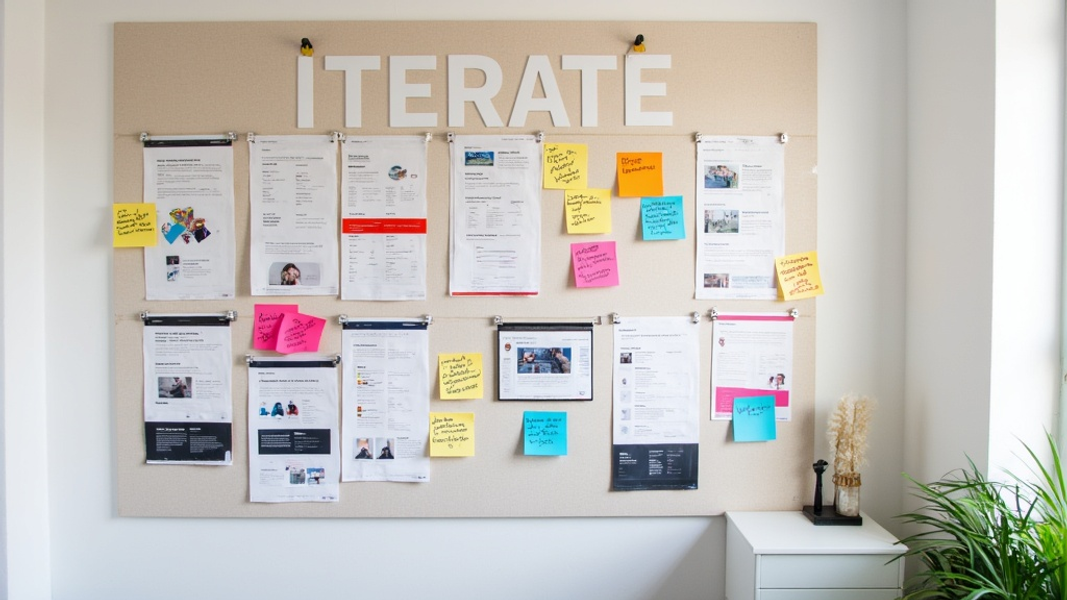
Have you ever wondered if your brilliant product idea will actually succeed in the market? Validating your Minimum Viable Product (MVP) can give you that crucial insight before you invest significant time and money. This guide will walk you through effective MVP validation methods to ensure your product has real potential.
Understanding MVP Validation
An MVP is the most basic version of your product that can still deliver value to users. It's a stripped-down prototype that helps you test your core idea quickly and cheaply. MVP validation is the process of confirming that your product solves a real problem and that people are willing to pay for it.
Why MVP Validation Matters
Validating your MVP is crucial because it helps you avoid wasting resources on ideas that won't work. It gives you early feedback from real users, which can shape your product development. This process also helps you identify your target market more clearly and can even attract early adopters or investors.
Many people think MVP validation is just about building a basic product and seeing if it sells. But it's much more than that. It's about testing your core assumptions and learning from potential customers. You don't always need a working product to validate your idea – sometimes a landing page or a simple prototype is enough.
Preparing for MVP Validation
Before you start testing your MVP, you need to lay some groundwork. This preparation will make your validation efforts more effective and help you get clearer results.
Identifying Your Target Audience
First, you need to know who you're building your product for. Create detailed user personas that describe your ideal customers. Think about their age, job, interests, and the problems they face that your product could solve. The more specific you can be, the better you'll be able to target your validation efforts.
Setting Clear Goals and Metrics
Next, decide what success looks like for your MVP. Set specific, measurable goals. For example, you might aim for a certain number of sign-ups, a target conversion rate, or a specific amount of pre-orders. These goals will help you determine if your MVP is truly viable.
Choosing the Right Validation Methods
There are many ways to validate an MVP, and the best methods depend on your product and target audience. Consider factors like your budget, timeline, and the type of feedback you need. It's often best to use a combination of methods to get a well-rounded view of your product's potential.
10 Effective MVP Validation Techniques
Now let's dive into some proven ways to validate your MVP. Remember, you don't need to use all of these – pick the ones that make the most sense for your product and situation.
1. Landing Page Testing
A landing page is a simple, focused webpage that explains your product and its benefits. It's a great way to gauge interest without building a full product. Create a compelling page that clearly explains what your product does and why people should care. Use tools like Unbounce or Leadpages to build your page quickly.
Drive traffic to your page using ads or social media posts. Then, track how many people visit the page and how many take action (like signing up for updates or joining a waitlist). A high conversion rate suggests strong interest in your idea.

2. Crowdfunding Campaigns
Crowdfunding platforms like Kickstarter and Indiegogo let you present your idea to a large audience and see if they're willing to back it financially. This method not only validates interest but also helps you raise funds for development.
To run a successful campaign, create a compelling story around your product. Use videos, images, and clear descriptions to show why your product is unique and valuable. Set realistic funding goals and offer attractive rewards for backers.
3. Customer Interviews
Talking directly to potential customers is one of the most valuable ways to validate your MVP. These conversations give you deep insights into your users' needs and pain points.
Prepare a list of open-ended questions that explore the problem your product solves. Ask about their current solutions and what they like or dislike about them. Listen carefully to their responses and look for patterns across multiple interviews.
4. Smoke Tests
A smoke test involves creating a fake ad or product page to see if people will click on it or try to buy. This method lets you test market demand without building anything.
Set up ads on platforms like Google Ads or Facebook Ads that lead to a "coming soon" page. Track how many people click on the ad and try to sign up. High click-through rates and sign-ups indicate strong interest in your product concept.
5. Wizard of Oz MVP
This approach involves manually providing the service your product promises, even if you haven't built the technology yet. It's named after the movie where the wizard was just a man behind a curtain.
For example, if you're planning an AI-powered personal shopping assistant, you could start by having real people provide personalized recommendations. This lets you test the concept and gather user feedback without investing in complex AI systems upfront.
6. Concierge MVP
Similar to the Wizard of Oz approach, a concierge MVP involves providing a high-touch, personalized service to a small group of users. This method lets you interact closely with early customers and learn exactly what they need.
For instance, if you're building a meal planning app, you could start by creating custom meal plans for a few users manually. This hands-on approach gives you valuable insights into user preferences and pain points.
7. Email Campaigns
Email campaigns can be a powerful tool for MVP validation. They let you reach out to potential customers directly and gauge their interest in your product idea.
Build a list of contacts who fit your target audience. Create a series of emails that introduce your product concept and highlight its benefits. Track open rates, click-through rates, and responses to see how well your idea resonates.
8. Social Media Surveys
Social media platforms offer a quick and easy way to get feedback on your MVP. You can reach a large audience and gather responses quickly.
Create short, focused surveys about the problem your product solves. Use platforms like Twitter or LinkedIn to share your survey. Analyze the responses to see if people are experiencing the problem you're trying to solve and if they're interested in your solution.
9. Pre-order Pages
Setting up a pre-order page is a great way to test if people are willing to pay for your product. It goes beyond just gauging interest – it shows actual buying intent.
Create a page that clearly explains your product and its benefits. Offer an attractive pre-order deal, like a discount or exclusive features. Track how many people place pre-orders to validate demand for your product.
10. Waitlist Pages
Waitlist pages are a low-commitment way for potential customers to show interest in your product. They're especially useful for products that aren't quite ready for pre-orders.
Design a simple page that explains your product and allows people to join a waitlist for early access. Tools like FastWaitlist make it easy to create these pages without coding. The number of sign-ups can give you a good indication of market interest.

Analyzing MVP Validation Results
Once you've gathered data from your validation efforts, it's time to make sense of it all. This analysis will help you decide whether to move forward with your product, pivot, or go back to the drawing board.
Key Metrics to Track
The specific metrics you should focus on depend on your validation methods, but some common ones include:
- Conversion rate (e.g., visitors to sign-ups)
- Click-through rate on ads or emails
- Number of pre-orders or waitlist sign-ups
- Engagement rate with your content
- Qualitative feedback from interviews or surveys
Look at these metrics in the context of your goals. Did you meet or exceed your targets? If not, try to understand why.
Red Flags and Green Lights
Some signs that your MVP might need rethinking include:
- Very low engagement or conversion rates
- Consistent negative feedback about the core concept
- Difficulty finding people interested in interviews or surveys
On the other hand, positive signs include:
- High engagement and conversion rates
- Enthusiastic feedback in interviews
- People actively trying to buy or use your product before it's ready
Organizing Your Data
Use tools like Google Sheets or Airtable to organize your validation data. Create dashboards that give you a clear overview of your key metrics. This organization will help you spot trends and make informed decisions.
Common MVP Validation Pitfalls to Avoid
As you validate your MVP, be aware of these common mistakes:
Mistaking Initial Interest for Long-term Demand
Just because people like your idea doesn't mean they'll buy your product. Focus on validating actual purchasing intent, not just general interest.
Ignoring Negative Feedback
It's natural to want to focus on positive responses, but negative feedback is often the most valuable. It highlights problems you need to solve and can lead to significant improvements in your product.
Over-engineering the MVP
Remember, the goal is to test your core idea as quickly and cheaply as possible. Don't get bogged down in perfecting features that aren't essential to your main value proposition.
Next Steps After Validation
Once you've validated your MVP, it's time to take action based on what you've learned.
Iterating Based on Feedback
Use the insights you've gained to improve your product concept. Focus on addressing the main pain points and desires expressed by your potential customers.
Scaling Your MVP
If your validation results are positive, start planning how to scale your MVP into a full product. This might involve building out more features, improving the user experience, or preparing for a larger user base.
Maintaining a Validation Mindset
Even as you move forward with development, keep validating your assumptions and gathering user feedback. The market can change quickly, so stay in touch with your users' needs.
Wrapping Up
Validating your MVP is a crucial step in the product development process. It helps you confirm that you're building something people actually want and are willing to pay for. By using a combination of the techniques we've discussed, you can gain valuable insights that will guide your product development and increase your chances of success.
Remember, validation is an ongoing process. Keep listening to your users, testing your assumptions, and iterating on your product. With patience and persistence, you can turn your MVP into a successful, market-ready product that truly meets your customers' needs.
FAQ
What if my MVP validation results are negative?
Negative results don't necessarily mean your idea is bad. They might indicate that you need to pivot your concept, target a different audience, or solve the problem in a different way. Use the feedback you've gathered to understand why your idea didn't resonate and how you might improve it.
How long should the MVP validation process take?
The timeline can vary widely depending on your product and validation methods. Some techniques, like landing page tests, can provide results in a few weeks. Others, like customer interviews or concierge MVPs, might take several months to gather meaningful data. Aim to move quickly, but give yourself enough time to collect substantial feedback.
Can I use multiple validation techniques at once?
Yes, and it's often a good idea to do so. Different techniques can provide different types of insights. For example, you might run a landing page test to gauge general interest while also conducting customer interviews for deeper qualitative feedback. Using multiple methods can give you a more well-rounded view of your product's potential.
How much should I invest in MVP validation?
The goal of MVP validation is to learn as much as possible while spending as little as necessary. Start with low-cost methods like surveys or landing pages. If those show promise, you can invest more in techniques like paid ads or building a basic prototype. The key is to match your investment to the level of risk and potential reward.
What if I'm not tech-savvy? Can I still validate my MVP?
Absolutely. Many validation techniques, like customer interviews, surveys, or concierge MVPs, don't require technical skills. For methods that do need a website or simple app, there are many no-code tools available that make it easy to create landing pages or basic prototypes without coding knowledge.
